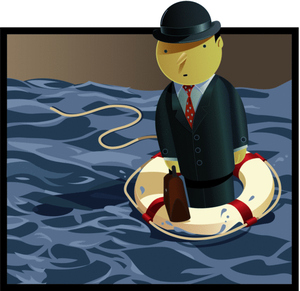You can’t sleep through your own social media efforts
August 3, 2011

…no effort, no real gain
I will admit right off the bat, this is a bit of a rant, which you know I don’t do very often.
I was on the phone with a prospect (an organization who is just contemplating how/if they should begin to participate in social media) and I was talking about the process we’ve developed to help clients create a social media strategy that actually defines why they’d invest resources into the effort and then measures against those goals.
Just like any marketing strategy — we identify audiences, key messages, the right channels etc.
We end up creating a very robust strategy with our clients and then we teach them how to implement it. For the next several months, we walk along side them as they get their sea legs. We help them test drive different tools and schedules until they really feel confident that they can generate, conduct, find and participate in the kinds of conversations where they can add value and get value in return.
After that, we help them tweak the strategy and we might help with some content editing or repurposing some existing content for a blog or e-newsletter — but for the most part, they’re doing it on their own. Because it is their conversation to have.
At this point in the phone call the prospect stopped the conversation and said “wait a second, are you saying that you don’t believe you should do it all for us? I’ve talked to four other firms/consultants and no one’s ever suggested that we would do some of it ourselves. They said it would be much easier on us if we just paid them a monthly fee and they took care of it all.”
What??? Are you freaking kidding me?
I’m not going to get into the “social media expert” discussion because it’s been done to death. But, it infuriates me when people hold themselves out as any sort of expert and then purposefully give their clients bad advice because it puts more money into their own pocket. It’s not only a crappy way to do business and dishonest — but it has the potential to do some serious damage to the client’s business.
Of course hiring someone else to do it all for you would be easier. But that doesn’t make it better or even right. It would be easier if you sat on the couch rather than going to the gym — but you don’t actually build any muscles that way.
Now don’t get me wrong. There’s nothing wrong with hiring someone to help you. People hire MMG all the time for that very purpose.
But you have to do some of the driving yourself. Think about it.
Can a paid consultant respond to a customer complaint on a Facebook page wall or add to a conversation about your area of expertise in your blog’s comment section? They can probably fake it. But it certainly is a lost opportunity if you let them “handle” it rather than you digging in and really either starting or enhancing a relationship — all in front of hundreds (or thousands) of potential buyers.
Don’t let any social media agency, company or consultant own your social media activity any more than you’d let a stranger answer your customer service line.
If you do, it may be the most expensive buying decision you ever make.
More



















